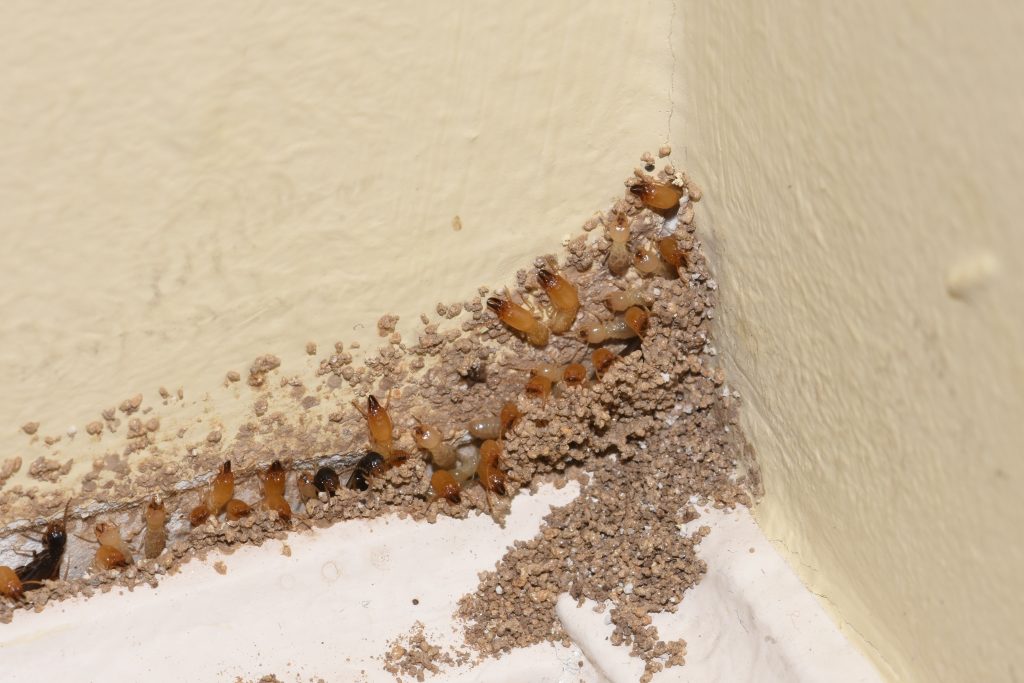Termites are small, destructive pests that can cause significant damage to your home if left unchecked. Early detection and prevention of termite infestations is essential to protect your home from lasting damage. In this article, we’ll explore the early warning signs of termites, so you can identify and prevent an infestation before it’s too late.
What are Termites?
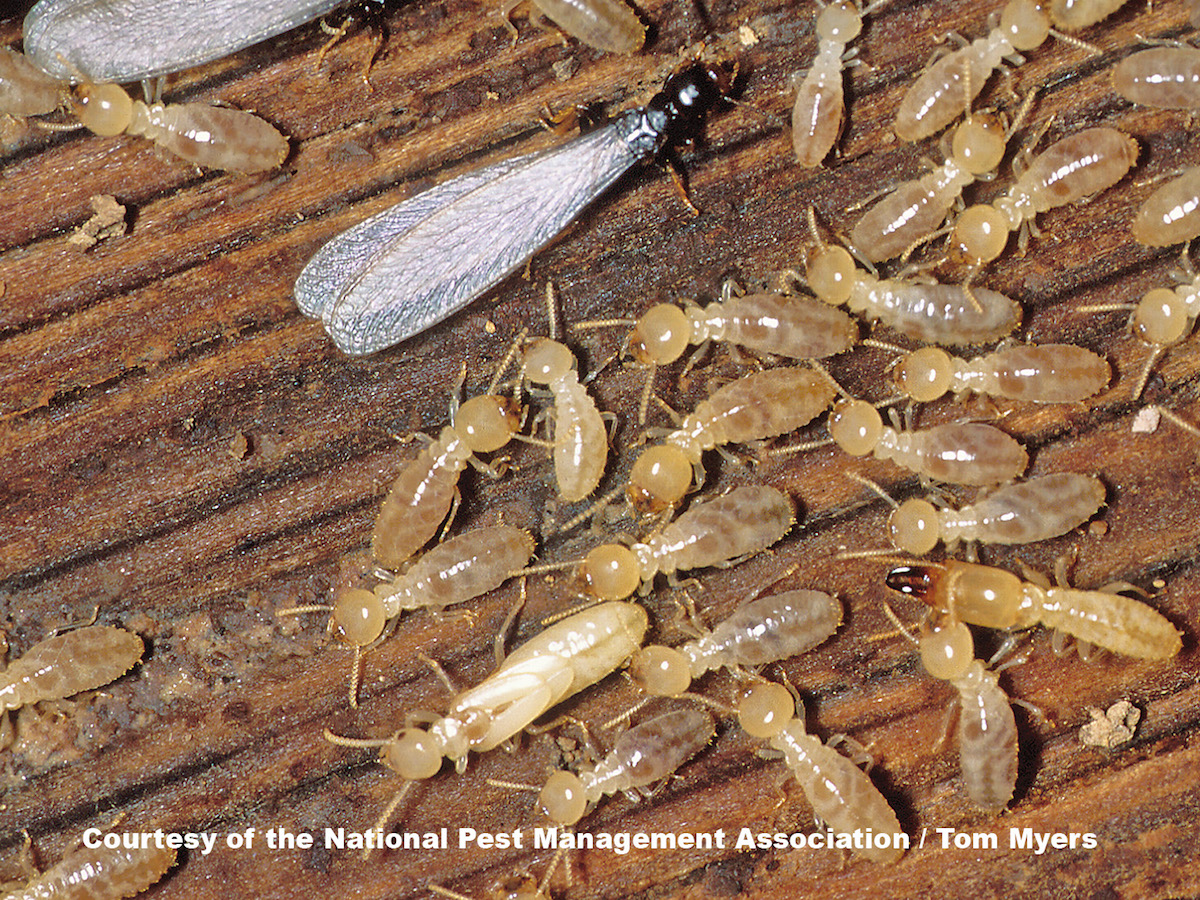
Termites are small insects that live in colonies and can cause significant damage to wooden structures such as buildings, furniture, and trees. They feed on wood and other cellulose-based materials and can cause significant economic losses. Termites can be divided into two categories: subterranean and drywood. Subterranean termites live in the soil and build their colonies in the ground, whereas drywood termites live in dry wood and build their colonies inside the wood itself.
Termites can be difficult to detect, especially in the early stages of an infestation. The presence of termites can be identified by the following signs:
- Mud tubes on the outside of a structure
- Discolored or damaged wood
- Swarms of flying insects
- Piles of wings near windows or doors
- Presence of termite droppings or fecal matter
Types of Termites
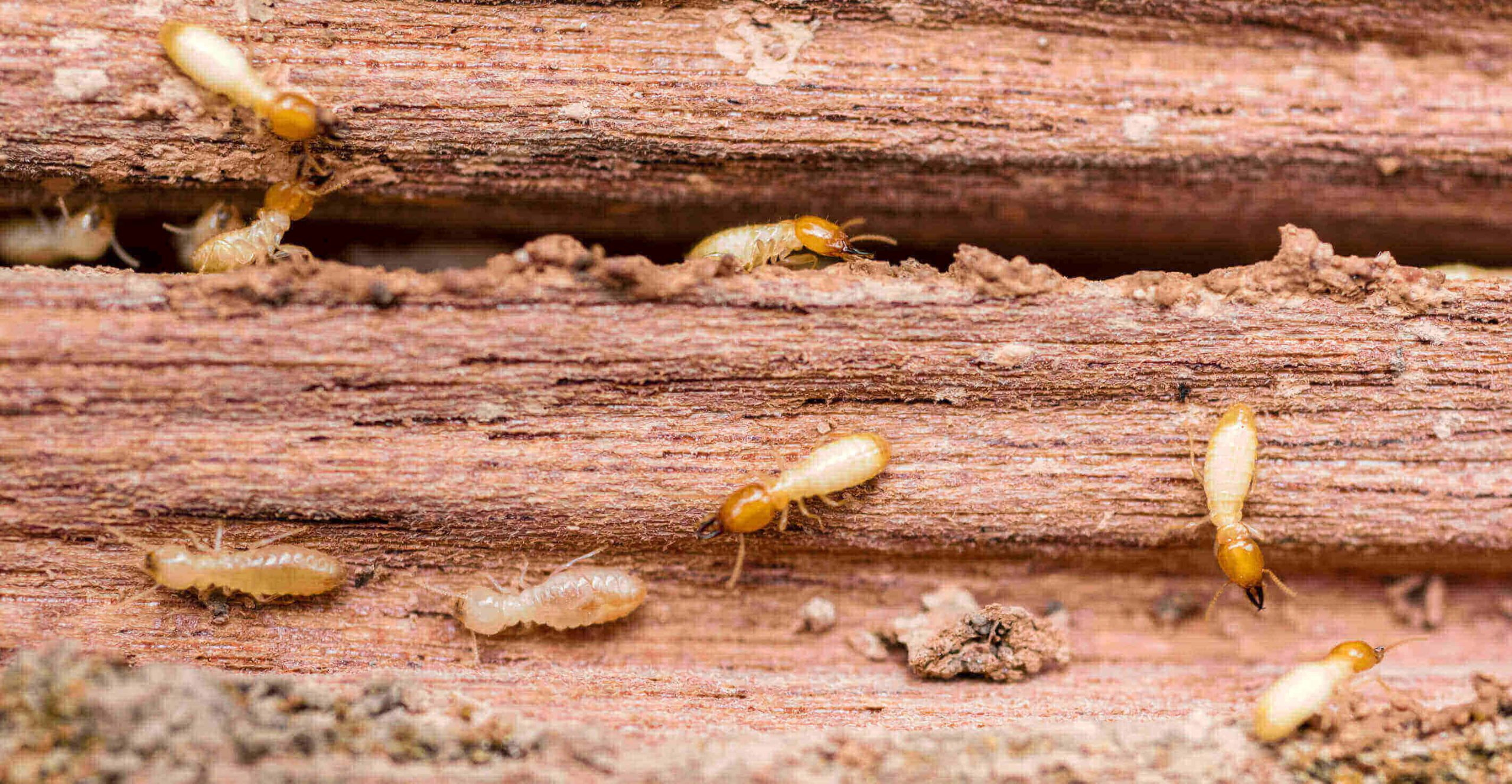
- Drywood Termites
- Subterranean Termites
- Formosan Termites
Drywood Termites are found commonly in warm, dry climates, and live in the wood they consume. They don’t require contact with the soil, and can be found in the structures of buildings, furniture, and other wooden items.
Subterranean Termites live in the soil and build tunnels in order to reach above ground food sources. They can also build mud tubes to travel between food sources, and these tubes are sometimes visible on the exterior of buildings.
Formosan Termites are a more aggressive species of subterranean termite. They are found in the southern United States, and can cause more damage in a shorter amount of time. They are also more difficult to treat, so early detection is key.
Signs of Infestation
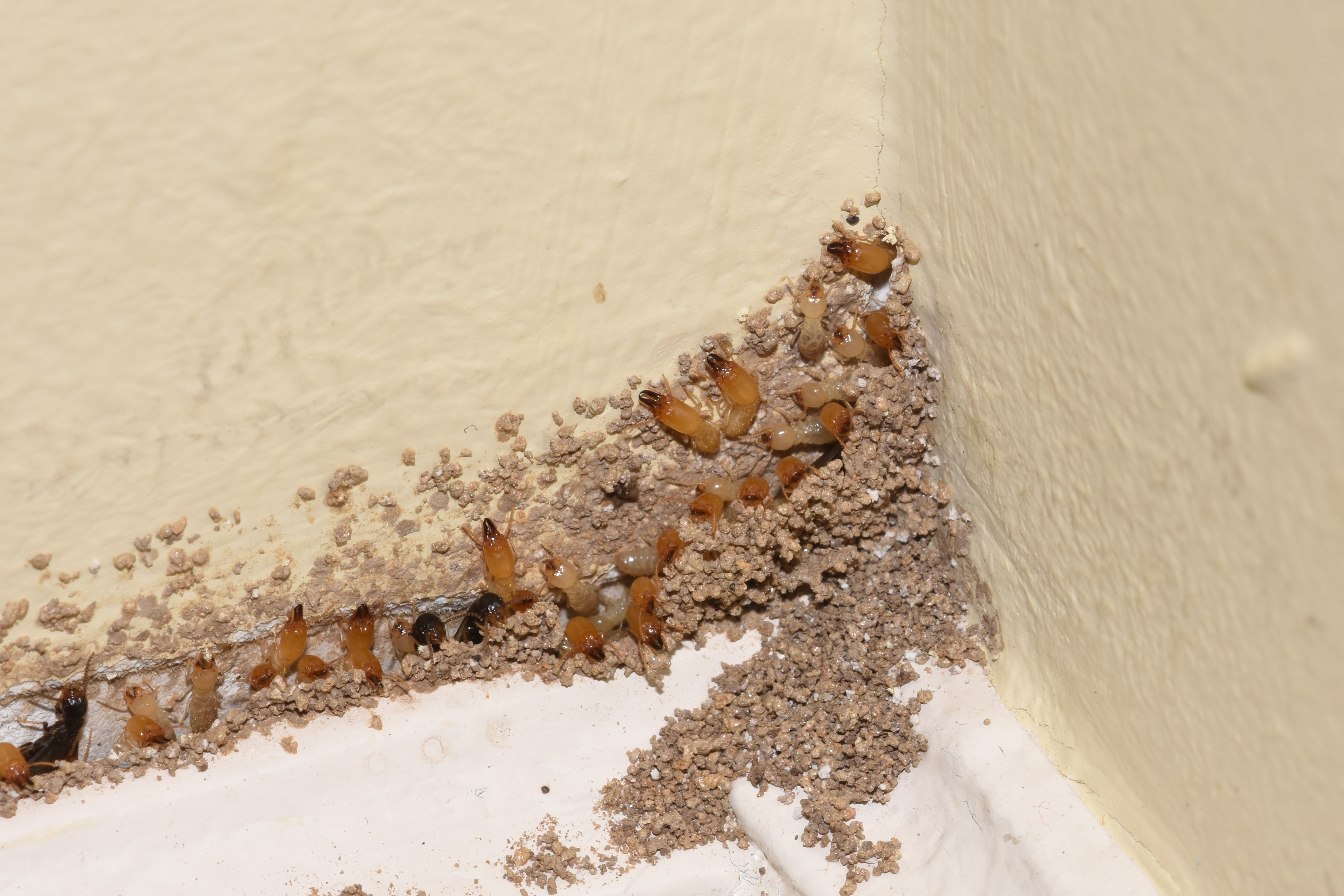
| Sign | Description |
|---|---|
| Mud tubes | Tubes of mud that termites build to reach food sources from their nests. |
| Discarded wings | Discarded wings from swarming termites can be found near windows, doors, and other entry points. |
| Cracked or bubbling paint | Termites may cause paint to crack or bubble. |
| Wood damage | Wood that has been damaged by termites may appear to be hollowed out or have visible tunnels. |
| Discolored wood | Termites can cause wood to become discolored, usually a darker shade. |
| Noise | In some cases, a clicking noise can be heard if the termites are disturbed. |
Droppings
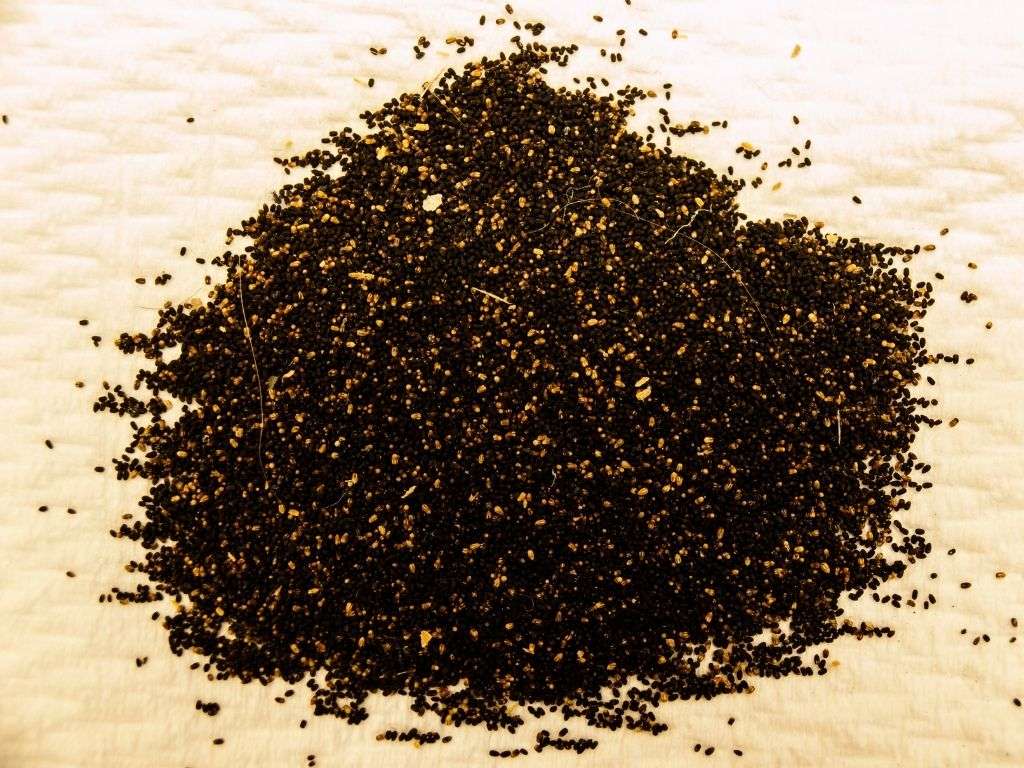
Termite droppings, also known as frass, are one of the most common signs of a termite infestation. These tiny, dry, black or brown pellets are the result of termites eating wood, and they can often be found near entry points to the home, in the attic, and around window and door frames. The presence of termite droppings indicates an active infestation and should be taken seriously.
Mud Tubes
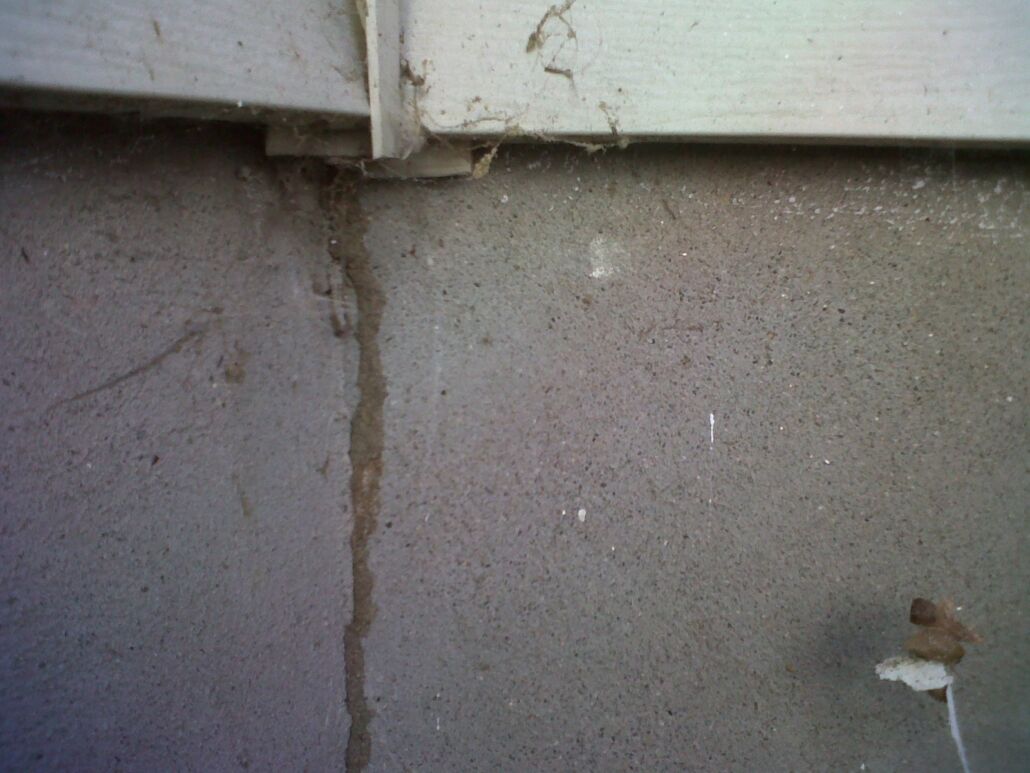
Termites build mud tubes to provide themselves with a safe, moist environment as they travel across surfaces in search of food. These mud tubes are typically made up of soil and pieces of wood and are roughly the thickness of a pencil. These tubes can be found on exterior walls, along foundations, and on beams in attics or basements. If any of these tubes are spotted, it is a sure sign that termites have invaded the property and further investigation is necessary.
Swarming
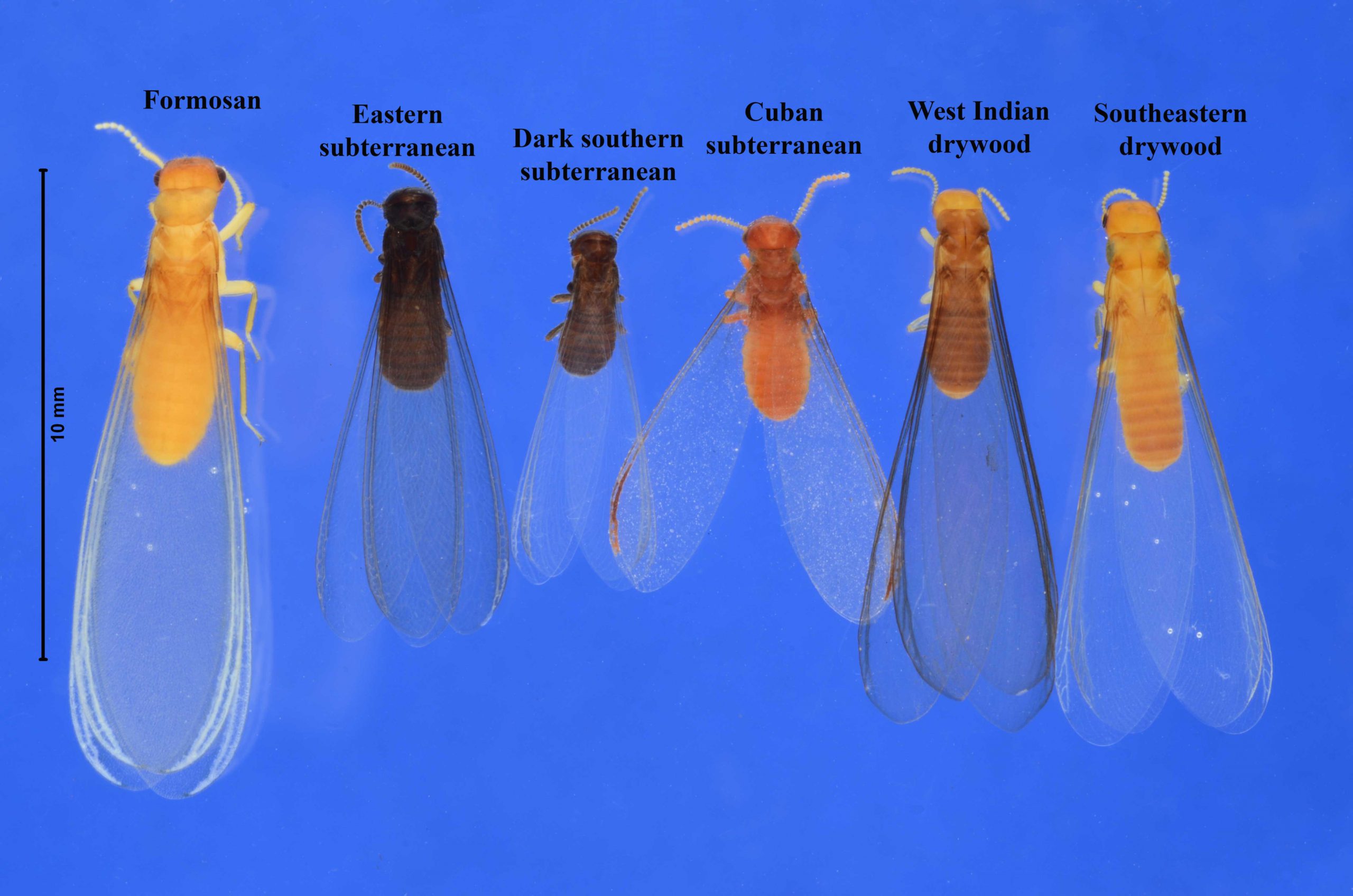
Swarming is one of the most obvious signs of termites. Winged termites, also known as swarmers, are a sign that a termite infestation is present. Swarming typically occurs on warm days after a rain, and the swarmers will often come out of the ground and fly around in search of suitable places to establish new colonies. Winged termites are about an inch long, and have two pairs of wings. They are dark brown to black in color and have a broad waist. If you see these insects, you should take immediate action to prevent the infestation from spreading.
Wood Damage
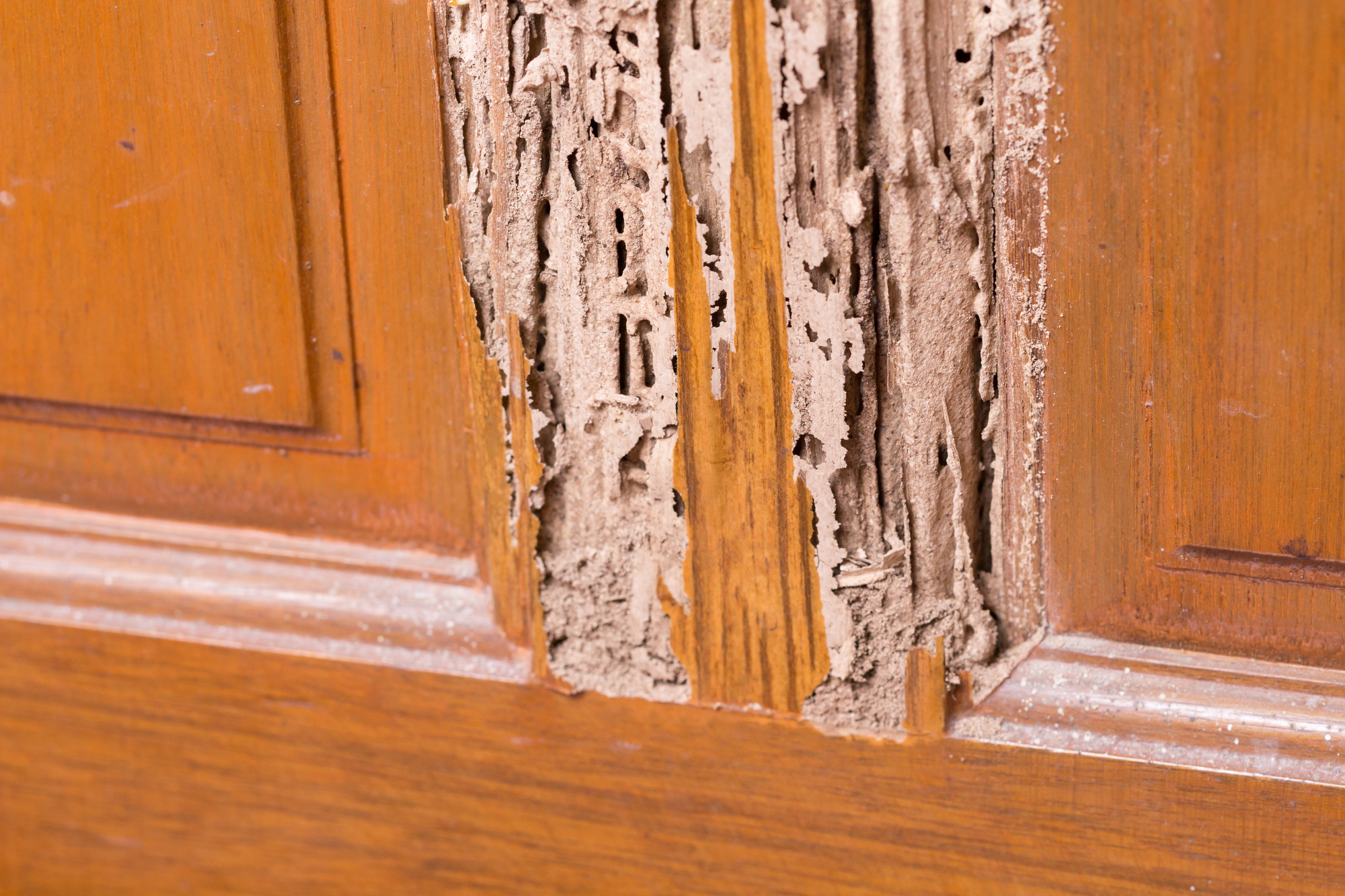
Termites feed on cellulose material such as wood, paper, and cardboard. As they feed, they cause damage to wooden structures like walls, furniture, and floors.
| Signs of Wood Damage | Explanation |
|---|---|
| Discoloration | Wood that is discolored and darkened is a sign of termite damage. |
| Hollow Sound | When you tap on wood, it should sound solid. If it sounds hollow, it could be a sign of wood damage by termites. |
| Crumbling Wood | Termites will eat away at wood, causing it to crumble and break apart. |
| Mud Tubes | Mud tubes, or tunnels, are another sign of termite damage. These are small tubes made of soil and saliva that termites use to move from place to place. |
Areas of Concern
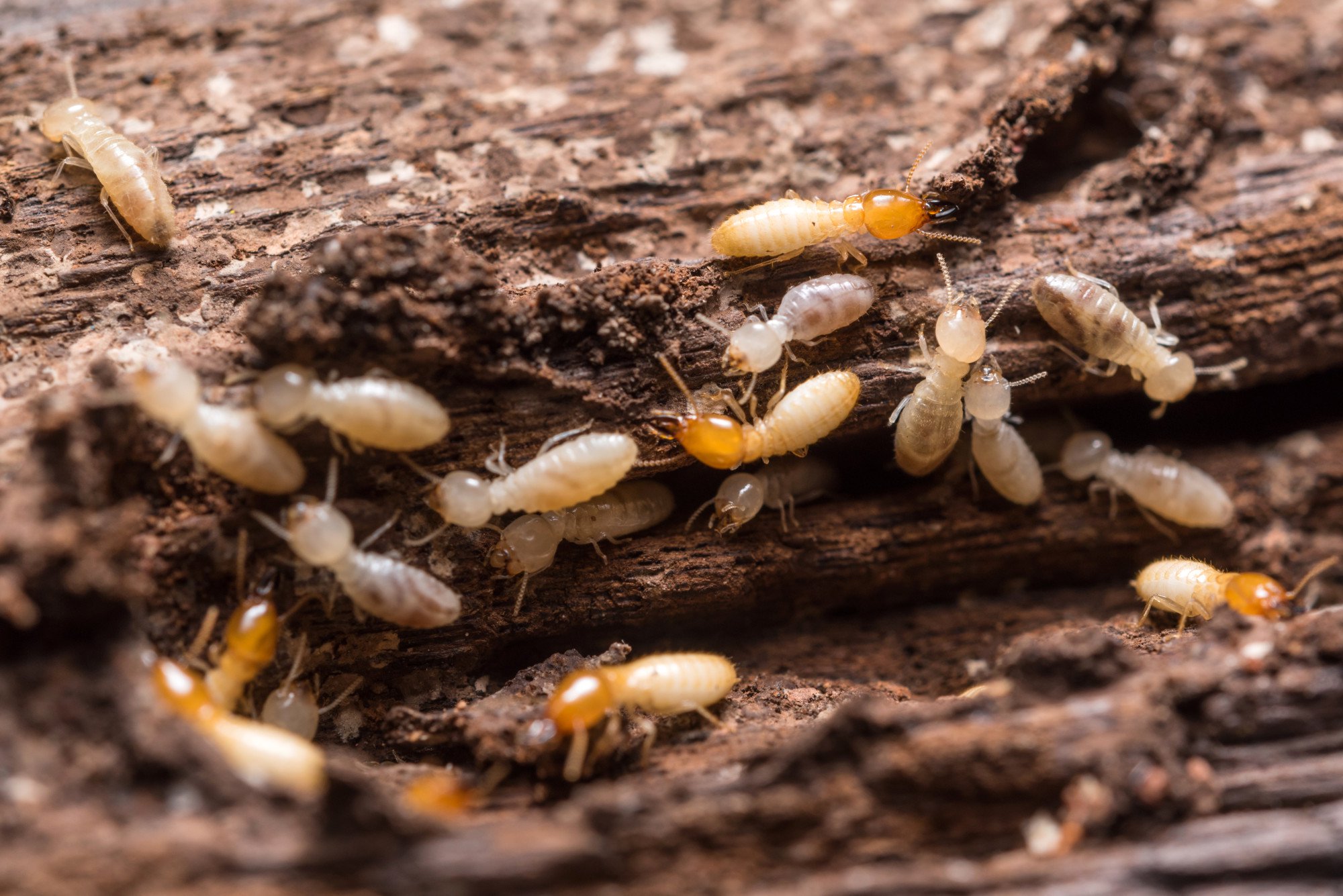
Termites can cause significant damage to wooden structures. It is important to be aware of the early warning signs of termites to identify an infestation before it becomes severe. Commonly, termites will target areas near moisture such as under sinks, around window frames, or along plumbing pipes. There may also be mud tubes along the foundation of buildings. Additionally, termites can be identified by their winged swarmers, which look like small ants with wings. Along the baseboards and flooring of a house, termites can leave behind a sawdust-like substance or small holes in the wood. If these signs are observed, it is important to contact a pest control company to inspect the area and determine the best course of action.
Subterranean Termites
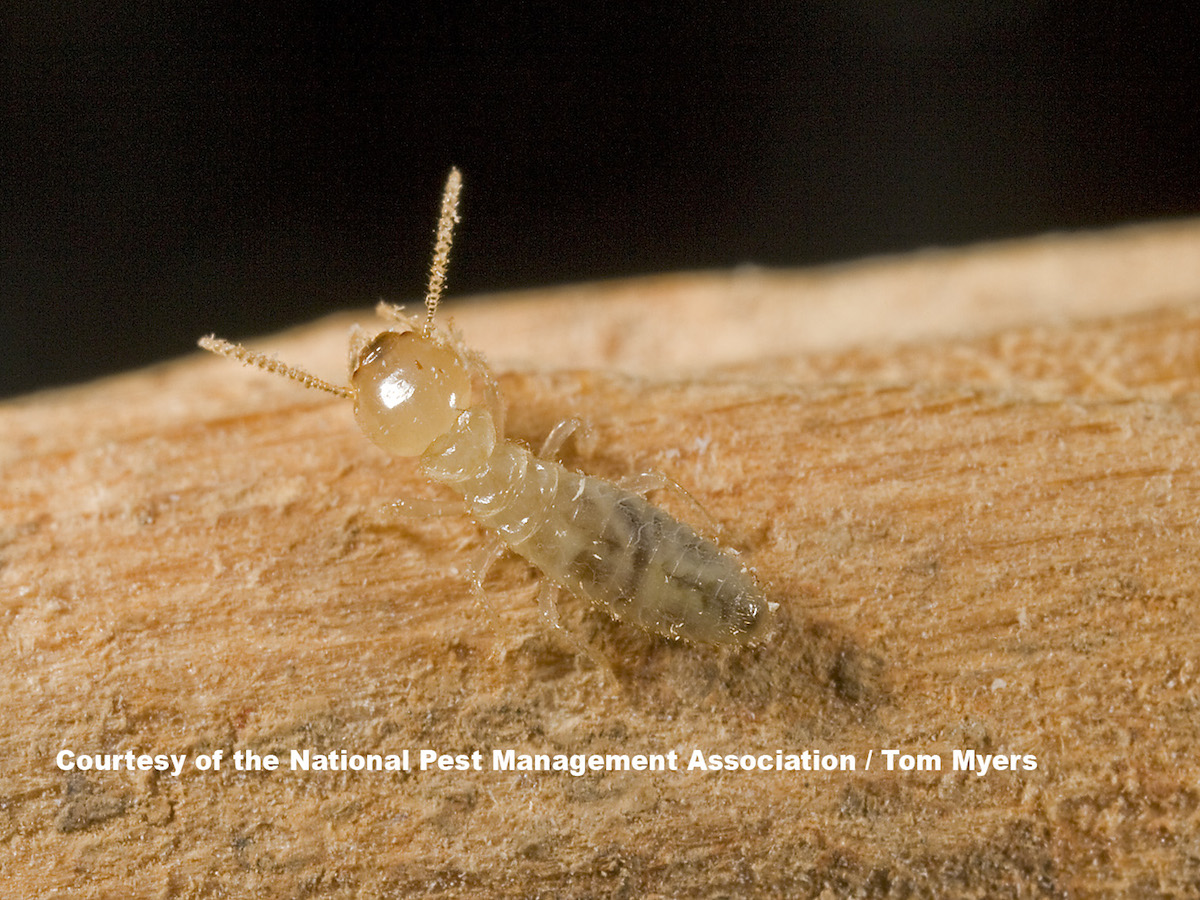
Subterranean termites are one of the most destructive termite species, and they can cause extensive damage to wooden structures. They live in large colonies underground and build extensive tunnel systems to reach their food sources, which are usually situated above ground. Signs of subterranean termite infestation include mud tubes extending up from the ground to the wooden structure, discarded wings near windows, and visible damage to wooden structures such as flooring and furniture. Other signs of an infestation include a musty smell and the presence of termite droppings, which look like small piles of sawdust.
Drywood Termites
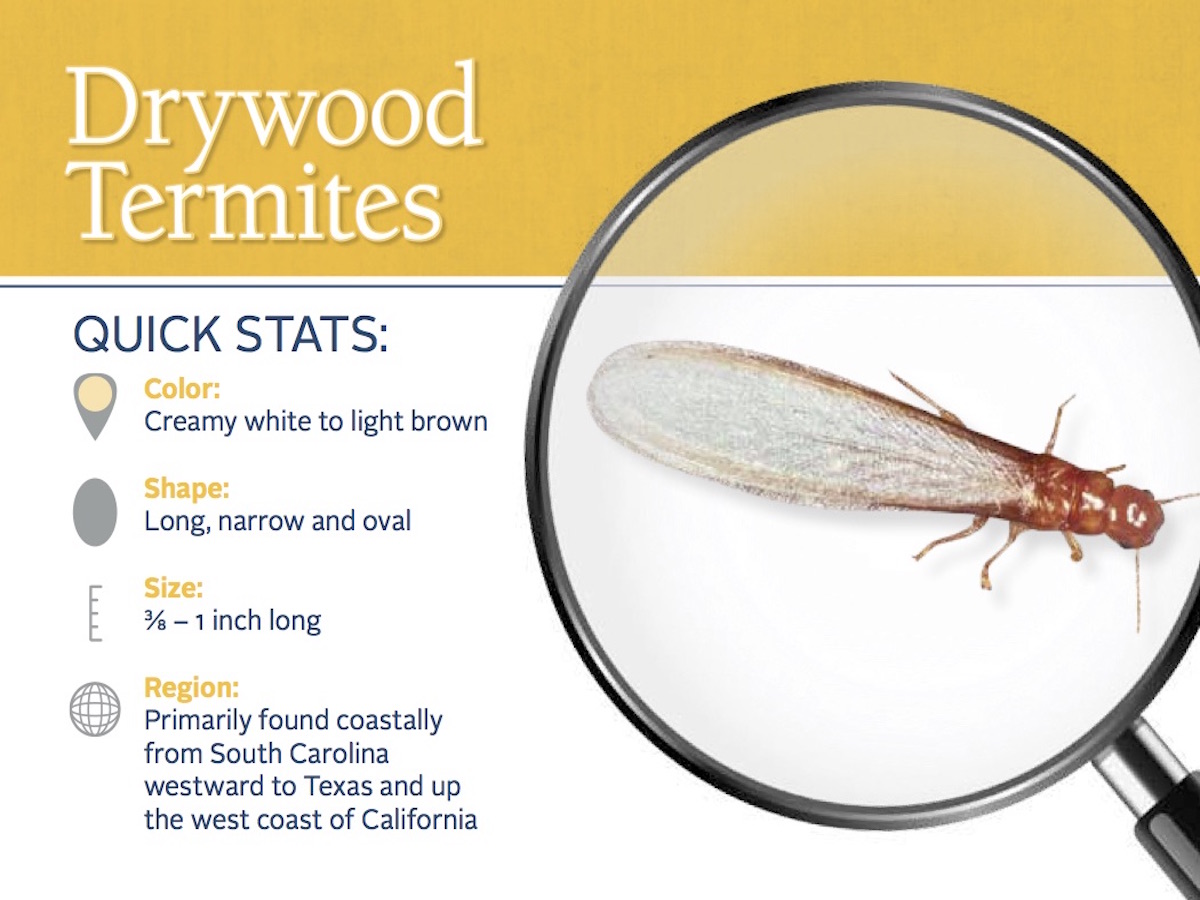
| Signs | Description |
|---|---|
| Mud Tubes | Small tubes made of mud and soil on the walls near the infestation area. |
| Fecal Droppings | Small piles of wood-colored droppings near the infestation area. |
| Hollowed Wood | Wood that sounds hollow when tapped. |
| Winged Termites | Winged termites flying around the infestation area. |
Drywood termites are the most destructive termite species and can cause severe damage to structures. Early warning signs of drywood termites include mud tubes, fecal droppings, hollowed wood, and winged termites. Mud tubes are small tubes made of mud and soil on the walls near the infestation area. Fecal droppings are small piles of wood-colored droppings near the infestation area. Hollowed wood is wood that sounds hollow when tapped. Winged termites are termites with wings that fly around the infestation area.
Formosan Termites
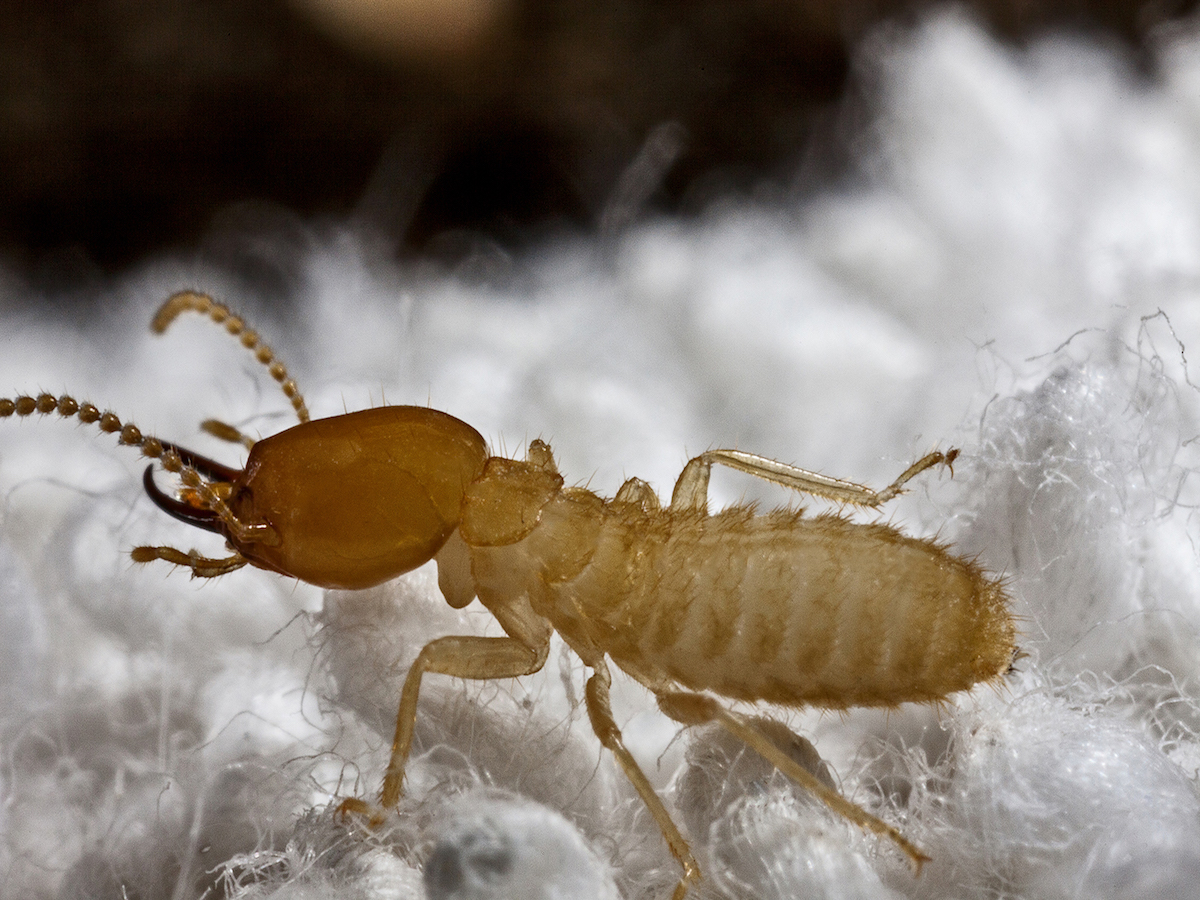
Formosan termites are considered to be the most destructive termite species in the world. They are native to China but have spread to other areas, making them a global problem. They can be identified by their light tan or white bodies, long antennae and wings, and their colonies consist of hundreds of thousands of individuals.
Formosan termites are known for their ability to consume large amounts of wood and other cellulose-based materials quickly, making them the most destructive species of termites. Early warning signs of Formosan termites include the presence of mud tubes on walls, wood, and other surfaces, as well as piles of frass, which are wood shavings created as the termites tunnel through wood. Winged swarming termites may also be seen around the home, and this is a sure sign of a mature colony. Formosan termites may also cause damage to walls, floors, and other surfaces, leaving a trail of destruction in their wake.
Early Warning Signs
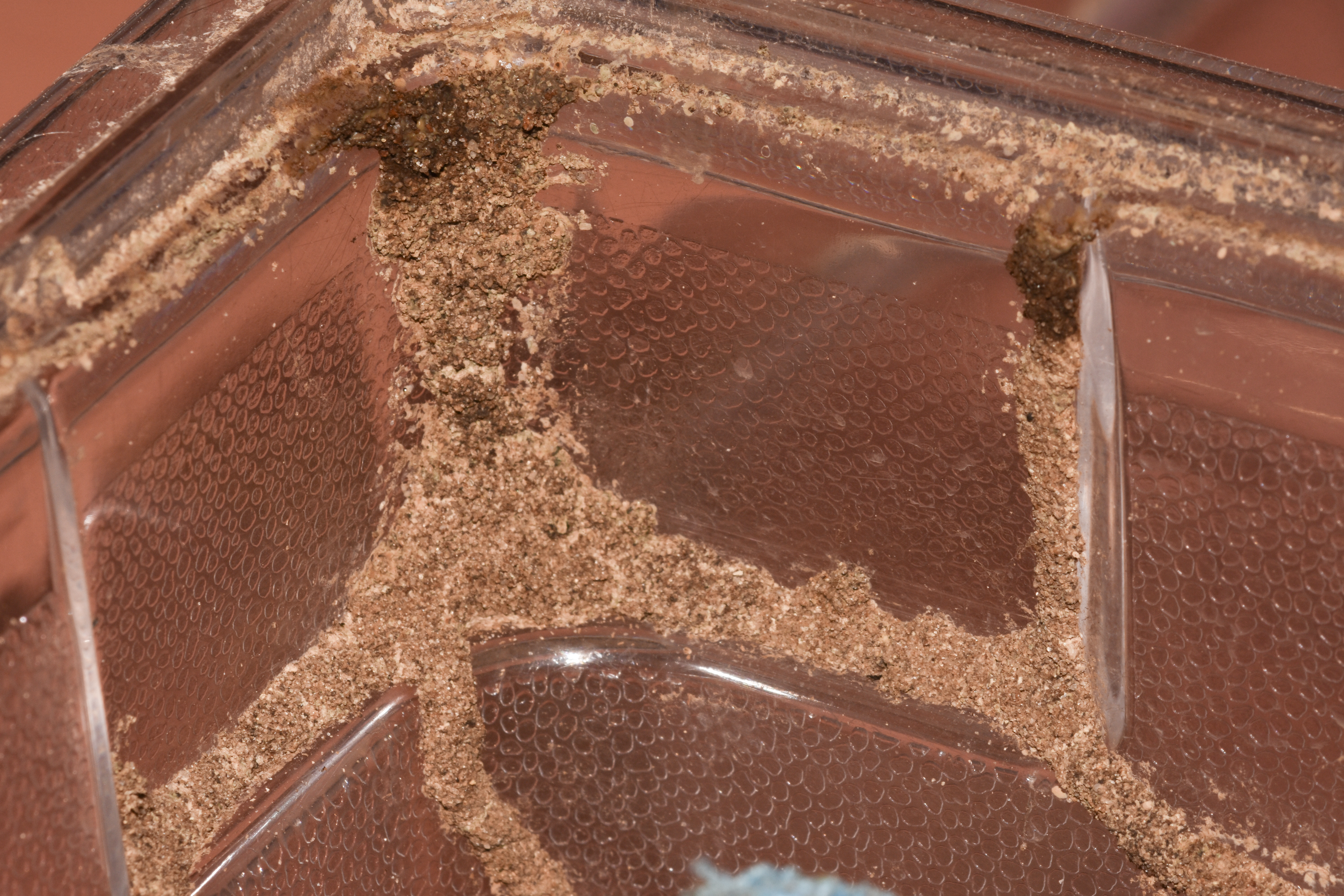
Termites can remain undetected for long periods of time, but there are warning signs to be aware of. Swarmers are the most obvious sign, as they are the reproductive members of the colony. These are usually seen in the spring, when the colony is in its reproductive phase. Other signs of termites include mud tubes on walls, floors and ceilings, hollow-sounding wood, and frass, which is the termite droppings. In some cases, termites may also leave wings behind, shedding them as they fly away. These wings are usually found near windows and doors. In extreme cases, you may also find signs of structural damage, as termites can cause structural damage to buildings if left undetected.
Discarded Wings
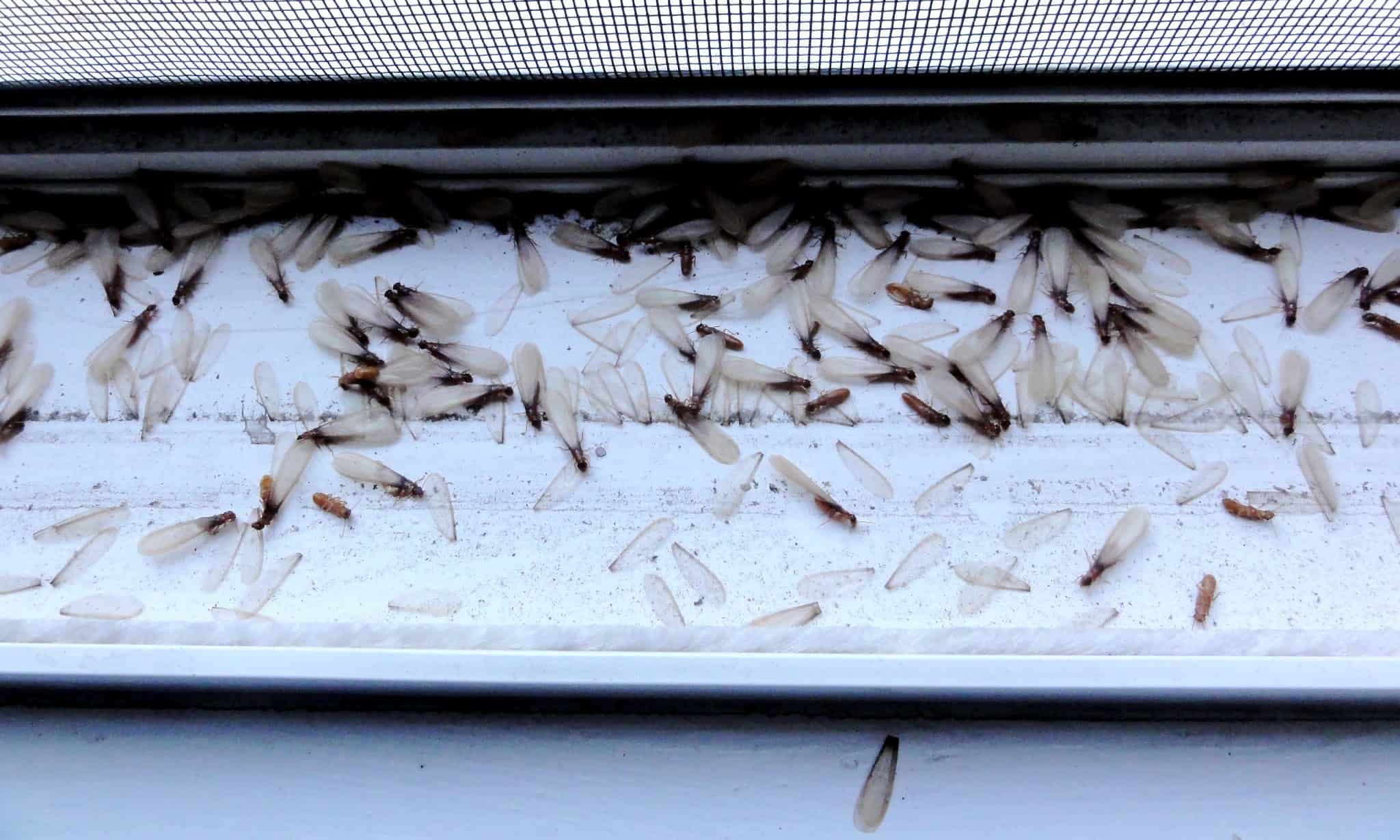
- Unexplained piles of wings near windows, doorways or other openings.
- Presence of wings in spider webs.
- Accumulation of wings in plumbing traps.
- Presence of wings in the corners of rooms.
Wood Shavings
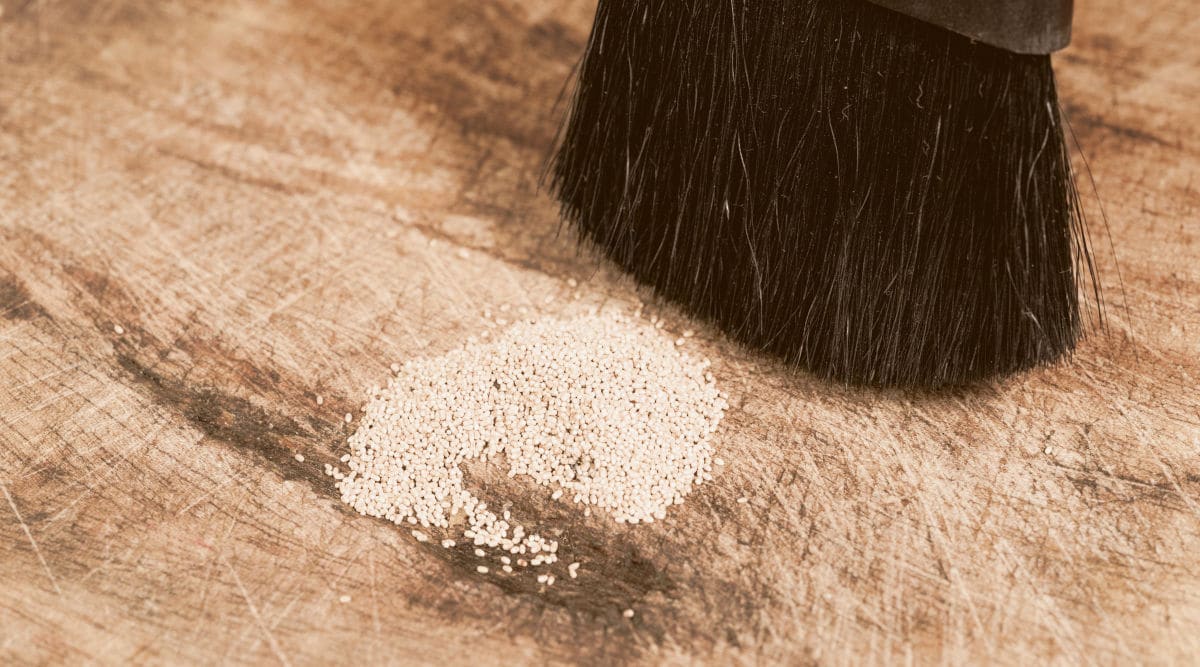
- Small piles of wood shavings, usually found near baseboards, windows, and doors.
- Fine sawdust-like material that accumulates in corners and crevices.
- Wood shavings are caused by termites chewing and excavating wood.
- These shavings could be indicative of an infestation.
Hollow Wood Sounds
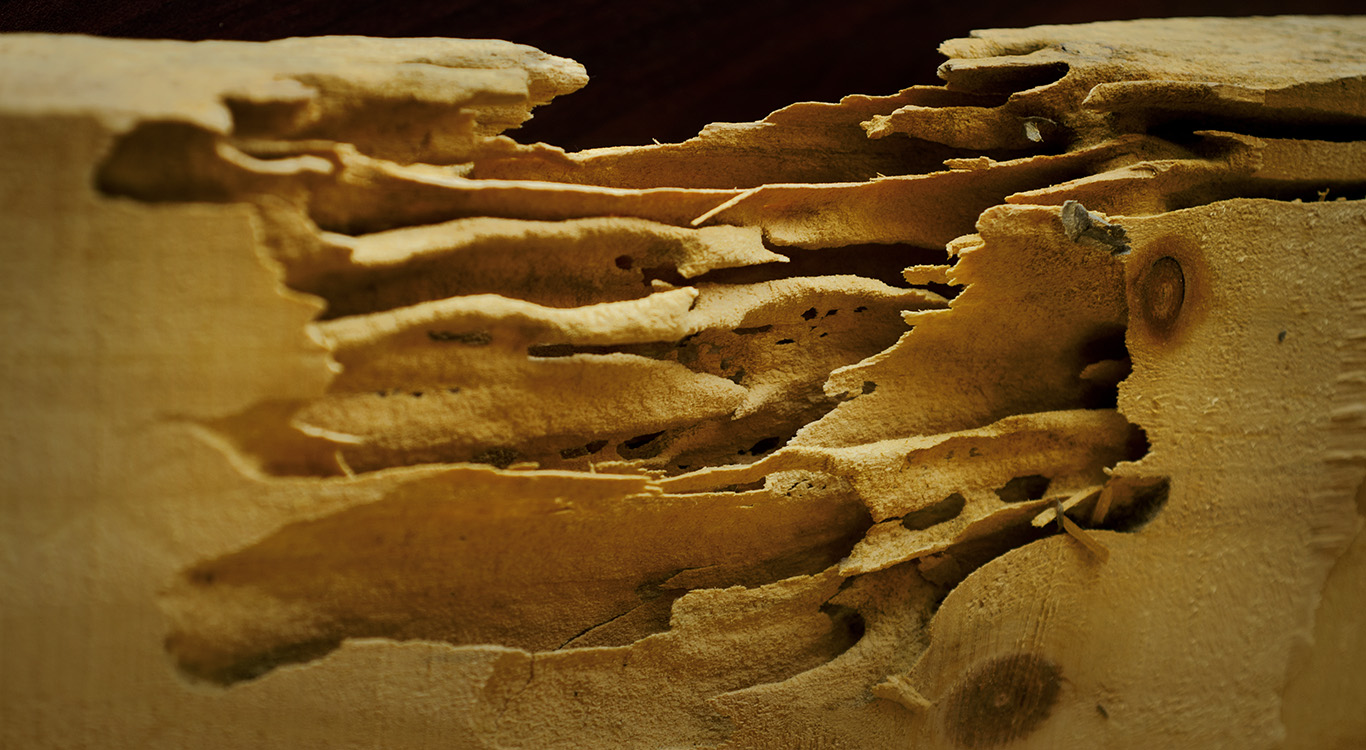
Termites can cause damage to the wood in a building. One of the telltale signs of termite infestation is hollow wood sounds when tapping on the wood in the building. Hollow wood sounds can be an early warning sign of termites because termites can eat away at the wood, weakening it and causing it to become hollow. If a homeowner notices hollow wood sounds when tapping on the wood in their home, it is important to inspect the wood for any signs of termite activity and contact a pest control service if termites are found.
Prevention Measures
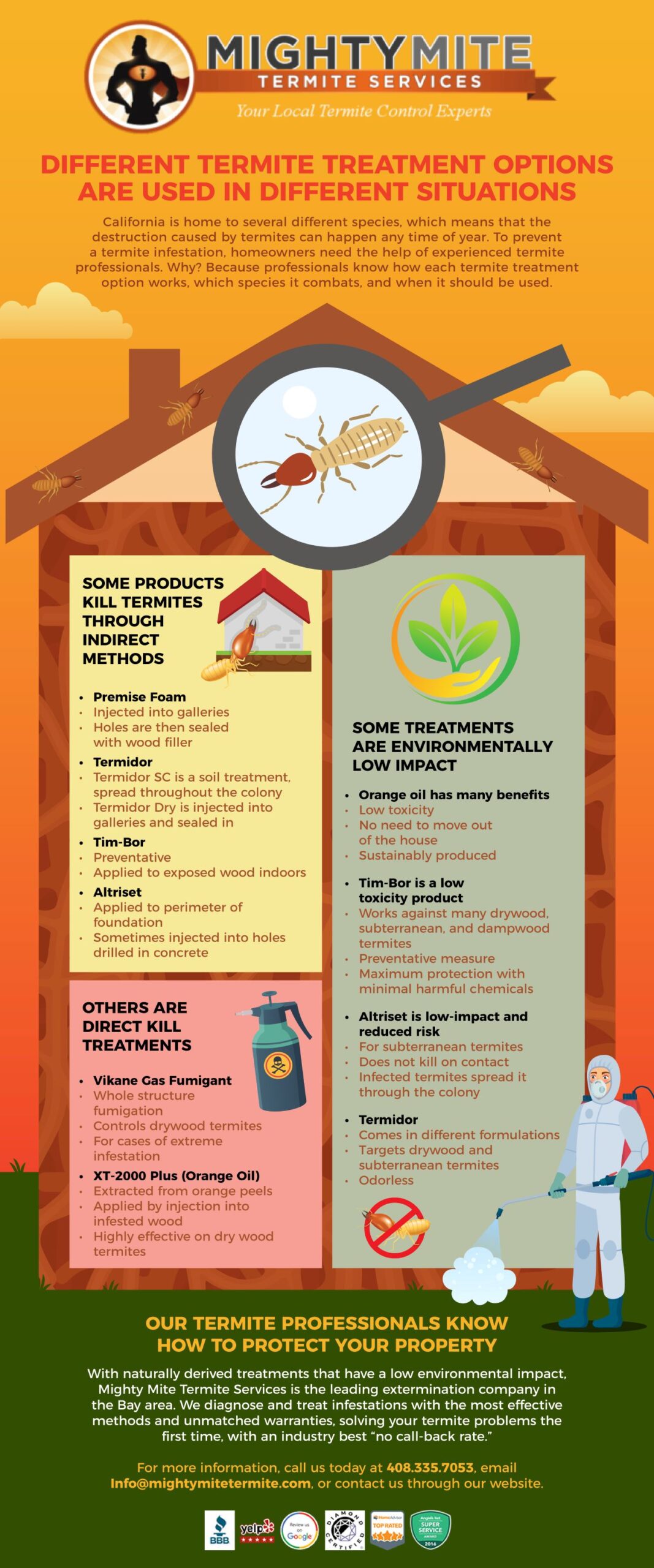
| Precaution | Description |
|---|---|
| Keep Moisture Away | Keep your home dry and free from moisture. Repair any leaky pipes or faucets, and avoid having water-filled containers around your home. Use dehumidifiers if necessary. |
| Reduce Humidity | Reduce the humidity levels in your home. Ventilation systems and fans can help in this regard. |
| Seal Cracks and Gaps | Seal any cracks and gaps in the walls and foundation of your home. Also, seal any gaps around windows, doors and other openings. |
| Keep Wood Away | Keep wood away from your home, especially wood that is in contact with the ground. This includes wood piles, construction debris and firewood. |
| Inspect Home Regularly | Inspect your home regularly for any signs of termite infestation. Pay special attention to areas where wood and soil meet. |
Moisture Control
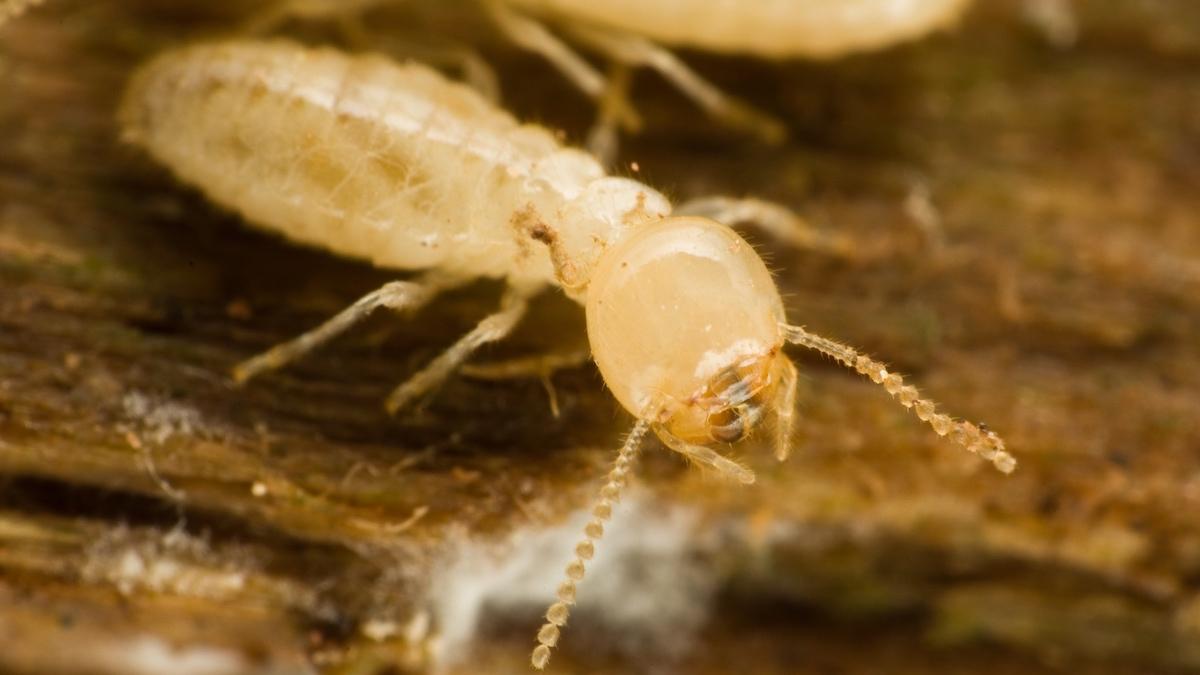
- Water accumulation around your home, such as in crawl spaces or near windows.
- Excess moisture in the basement or crawl spaces.
- High humidity levels in the home.
- Condensation on plumbing pipes, walls, and windows.
- Leaking roofs and gutters.
- Gaps in windows and doors.
- Gaps in the foundation, siding, or other exterior surfaces.
Proper Ventilation
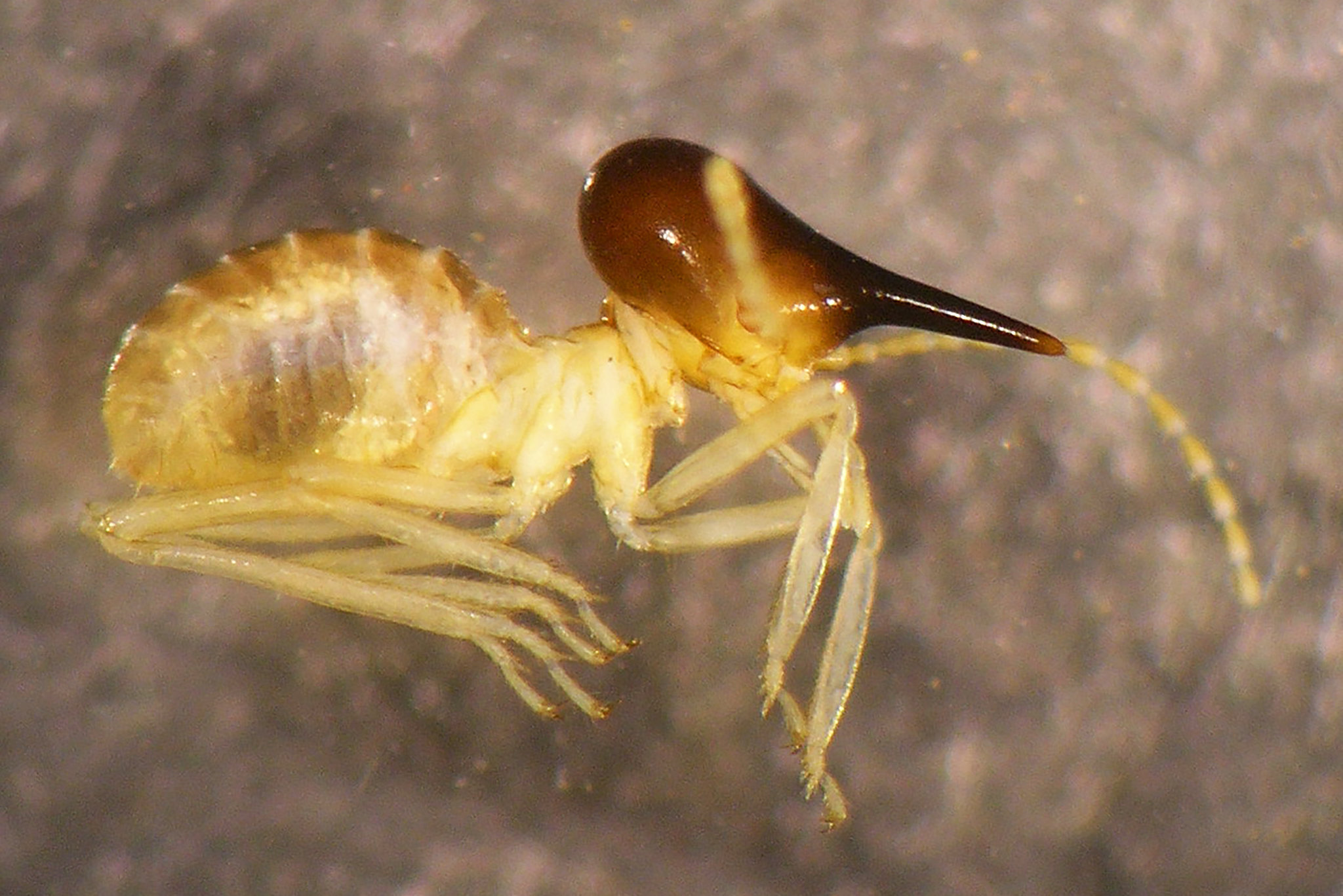
- Install vents in attics, basements and crawl spaces.
- Check for drafts around windows, doors, and other openings.
- Inspect air conditioning and heating systems for clogged filters or ducts.
- Check for moisture buildup on walls and ceilings.
- Ensure adequate ventilation in bathrooms and kitchens.
Eliminate Wood to Soil Contact
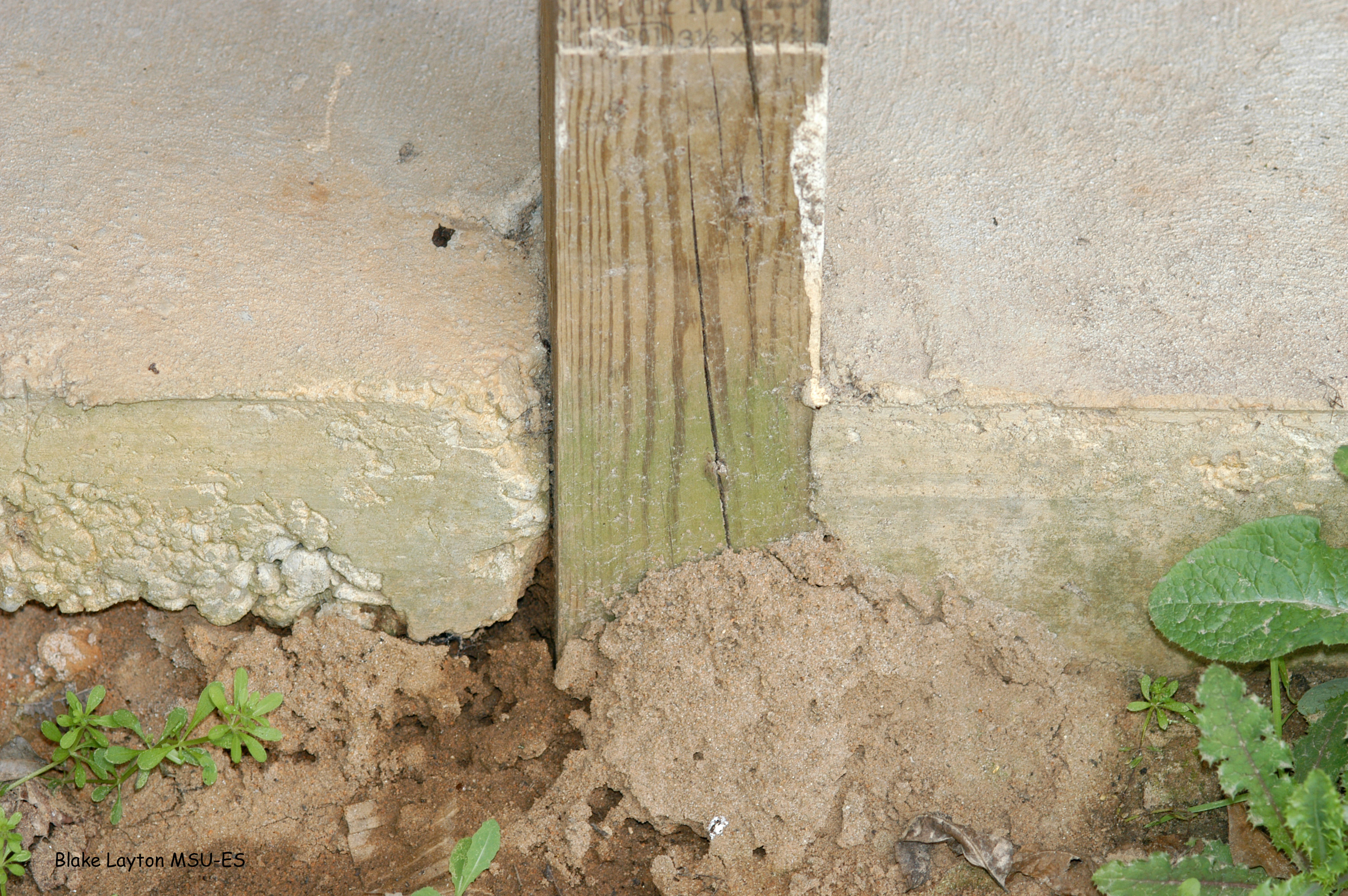
Wood to soil contact is one of the most common factors leading to termite infestations. Termites are naturally drawn to wood in contact with soil, as they are able to travel up the wood and gain access to the inside of a building. To prevent an infestation, it is important to ensure that there is no wood to soil contact. This can be done by covering the soil around the building with a barrier of plastic or metal, and ensuring that any wood is at least 6 inches away from the soil. Additionally, any wooden materials that are in contact with the soil should be treated with a termite-resistant chemical.
Remove Dead Wood
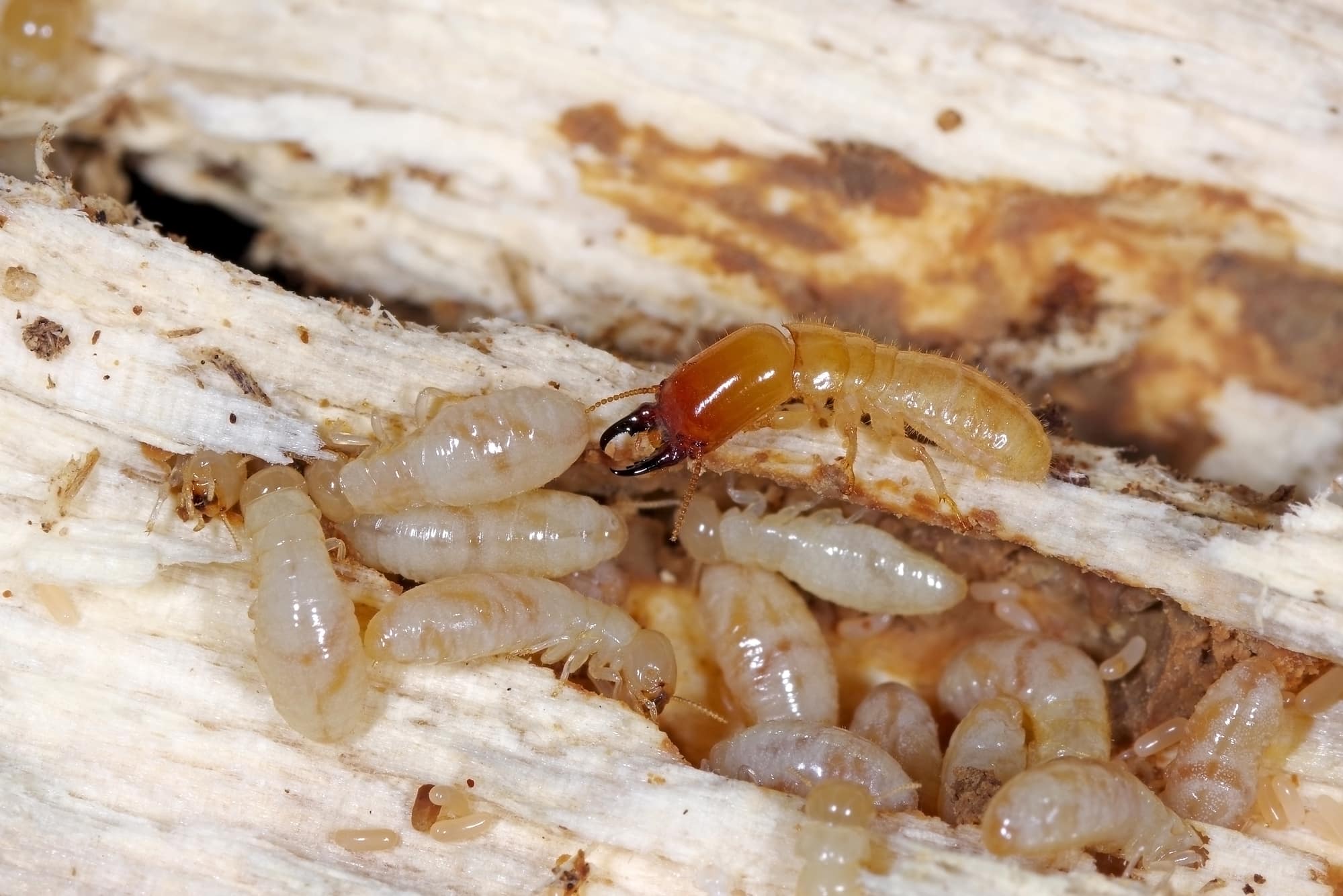
| Sign | Description |
| Dead wood on the ground | Look for pieces of wood that are damp or have holes in them. This could be an indication that termites are present and have been feeding on the wood. |
| Mud Tubes | Check for mud tubes, which are tunnels built by the termites to travel to and from the wood they are feeding on. |
| Wooden Structures | Inspect wooden structures such as fences, decks, sheds, and other wooden items for signs of damage. |
If you come across any of these signs, it is important to remove the dead wood as soon as possible. Removing the dead wood will help reduce the chances of termites infesting your home. Additionally, it can help prevent other pests from taking advantage of the wood. Be sure to dispose of the wood properly to make sure that termites cannot use it as a food source.
Treatment Options
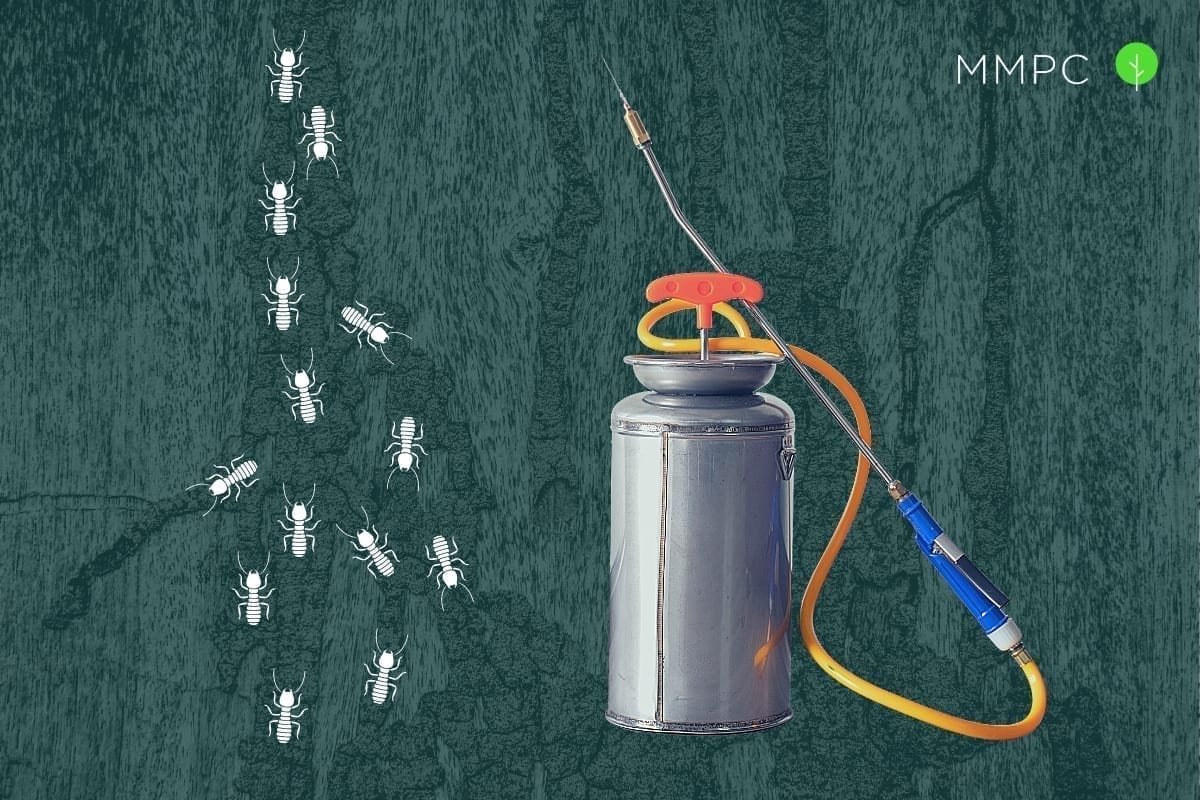
| Treatment | Description |
|---|---|
| Baiting | Uses termite bait stations placed around the perimeter of a home to attract and eliminate the termites. |
| Chemical Barrier | Soil is treated with an insecticide that creates an impenetrable barrier around the home, preventing termites from entering. |
| Fumigation | Gases are released into a home to fill the atmosphere, killing all termites present. |
| Heat Treatment | Heating the home to high temperatures (around 140°F) kills termites. |
Physical Treatment
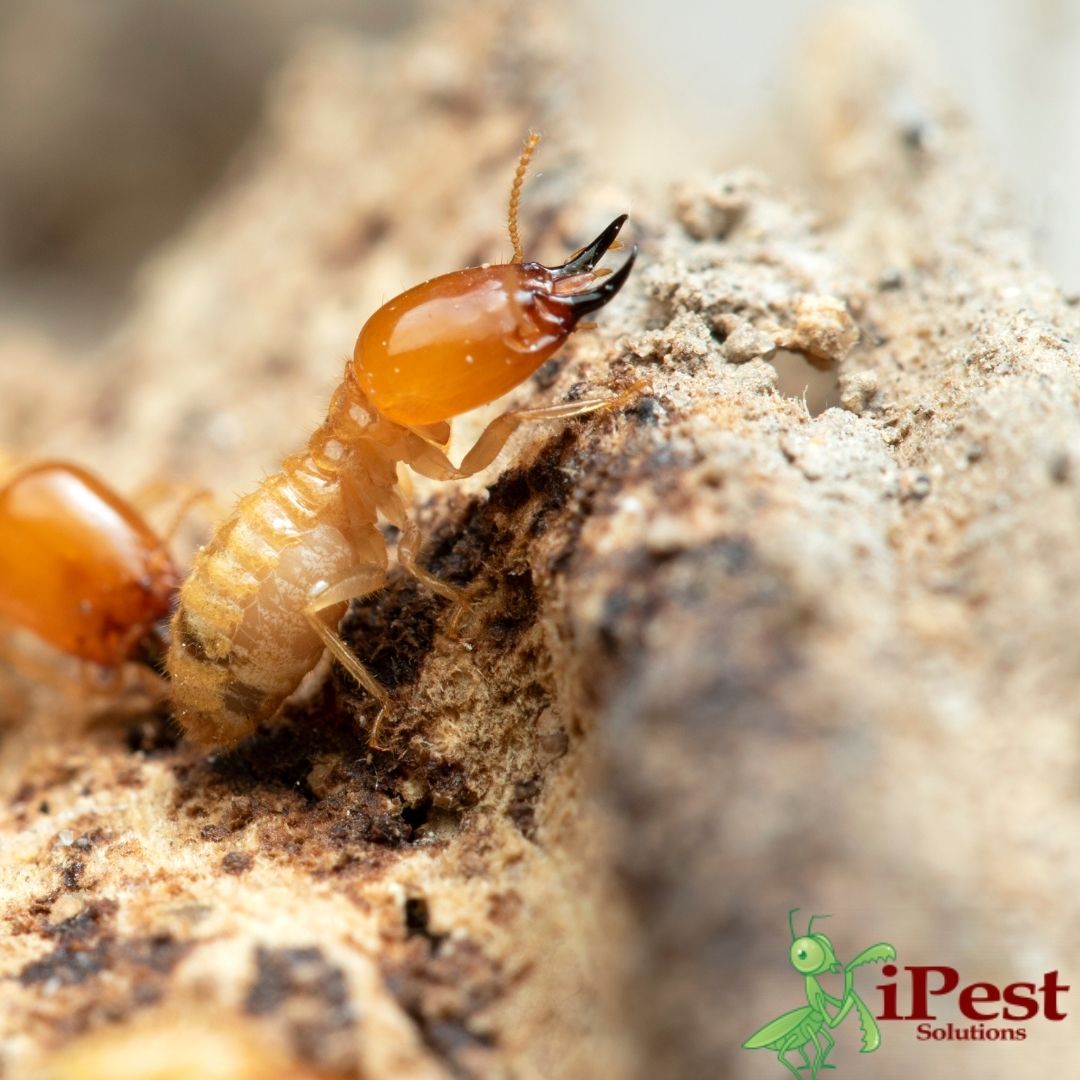
Physical treatments for termites involve using a soil-treatment chemical to create a barrier between the termites and the structure. This type of treatment is typically done around the foundation of the building and can be quite effective in controlling termite activity. The chemical barrier can also be used to treat the interior of the structure if necessary. This type of treatment is often done in conjunction with other treatments, such as baiting and trapping, to ensure the complete elimination of the termite infestation.
Chemical Treatment
| Treatment type | Description |
|---|---|
| Soil Treatment | Injection of termiticides into the soil around the foundation of the building. |
| Wood Treatment | Injection of termiticides into the wood, usually done during construction of the building. |
| Surface Treatment | Spraying of termiticides around the foundation of the building or on the surface of the wood. |
Chemical treatment is the process of applying a termiticide to the soil or wood to kill or repel termites. This is usually done through injection or spraying around the foundation of the building or on the surface of the wood. The three main types of chemical treatments are soil treatment, wood treatment and surface treatment. Soil treatment involves the injection of termiticides into the soil around the foundation of the building. Wood treatment involves the injection of termiticides into the wood, usually done during construction of the building. Surface treatment involves spraying of termiticides around the foundation of the building or on the surface of the wood.
Biological Treatment
Biological pest control is the use of natural predators to keep the population of termites in check. This method is most effective when done early, before the termite population has had a chance to become too large. Common predators include fungi, nematodes, and predatory insects such as ants, roaches, and beetles.
| Organism | Effectiveness |
|---|---|
| Fungi | Moderately effective |
| Nematodes | Moderately effective |
| Ants | Fairly effective |
| Roaches | Fairly effective |
| Beetles | Fairly effective |
The effectiveness of biological pest control depends on the species of pest and the predator used to control them. While it is not the most effective method, it is still a viable option for those looking to control termite populations.
Frequently Asked Questions
What are the early warning signs of termites?
Termites can cause extensive damage to a structure, so it is important to watch for early warning signs of an infestation. Some of the most common signs of termites include:
• Mud tubes on the exterior of a building: Termites travel underground and create mud tubes, which are small tunnels made of soil and saliva, to get to a food source.
• Swarmers: Winged termites, or swarmers, are a sign that a termite colony is nearby and may be a threat to a structure.
• Discarded wings: Swarmers shed their wings after they have found a mate and established a new colony. The discarded wings are a sign of a nearby termite infestation.
• Hollow sounding wood: Termites consume wood from the inside out, leaving a honeycomb pattern that can be detected by tapping on the surface of the wood.
• Damage to wood: Paint that is bubbling or peeling, wood that is cracked or sagging, and small holes in the wood may all be signs of a termite infestation.
How can I identify termites before it’s too late?
Termites can be difficult to detect as they remain hidden in wood, walls and other areas. However, there are signs to look out for that may indicate their presence. These include mud tubes, which are made of soil and saliva and are used to travel between food sources, as well as discarded wings, which termites shed after mating. Other signs to look out for are wood damage, hollow-sounding wood, and piles of sawdust-like material near wood structures. If any of these signs are detected, it is important to contact a pest control specialist to inspect the area.
What are the best methods for preventing termites infestations?
The best way to prevent termites from infesting your home is to create a barrier between the soil and the structure. This can be achieved by using a physical barrier such as a termite shield or chemical barrier such as a termiticide. Additionally, you should also ensure that the soil around your home is well drained and that there are no woodpiles or other organic material near your home. Regularly inspect your home for any signs of termite activity and repair any water damage or rotting wood as soon as possible. Finally, you should also consider having a professional inspect your home regularly for signs of termite infestation.
What can I do if I suspect I already have termites?
If you suspect you already have termites, it is recommended to contact a professional pest management company to inspect and treat the infestation. A professional can provide an accurate assessment of the type of termite, the severity of the infestation and the best treatment plan. It is important to treat the area as soon as possible to avoid further damage.
How can I detect the first signs of termites?
Termites can be difficult to detect as they often remain hidden in the walls, floor, or foundation of a home. The most common signs of termites include: finding discarded wings near windows or doors, noticing small piles of sawdust near wood structures, seeing raised mud pathways on walls or foundation, and hearing a clicking noise coming from the walls. Homeowners should also be aware of any sudden changes in wood structure, such as a door or window becoming harder to open or close. If any of these signs are present, it is important to contact a pest control professional for further inspection.
Conclusion
Early warning signs of termites can be identified and prevented before it’s too late. Knowing the signs, such as mud tubes, hollow wood, and wings, can save homeowners from costly infestations. Professional inspection and treatments can also help to ensure that termites don’t become a problem. Taking the steps to prevent a termite infestation can help protect homes and property from structural damage.

